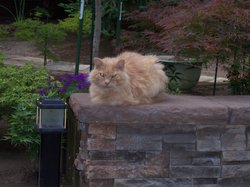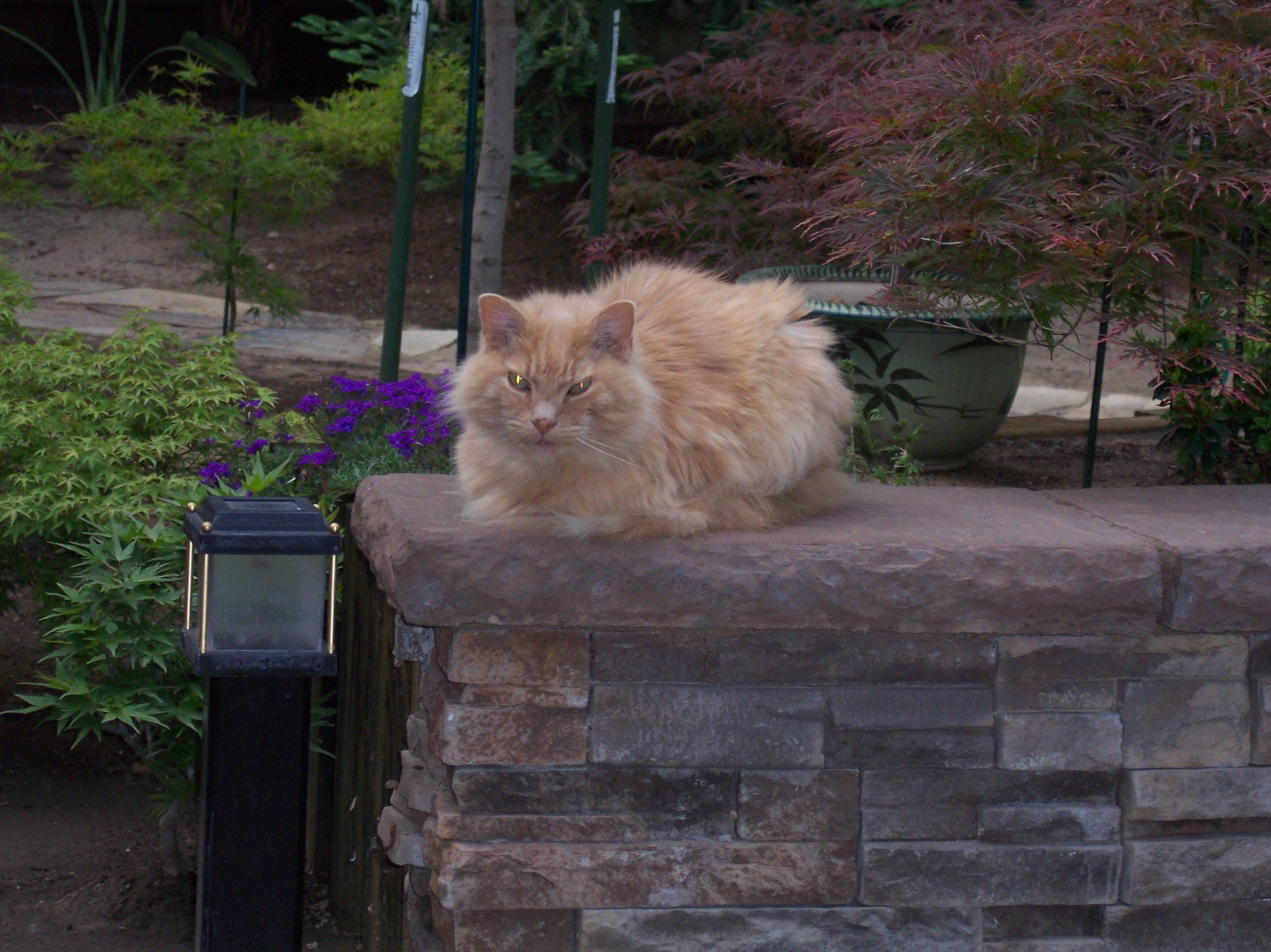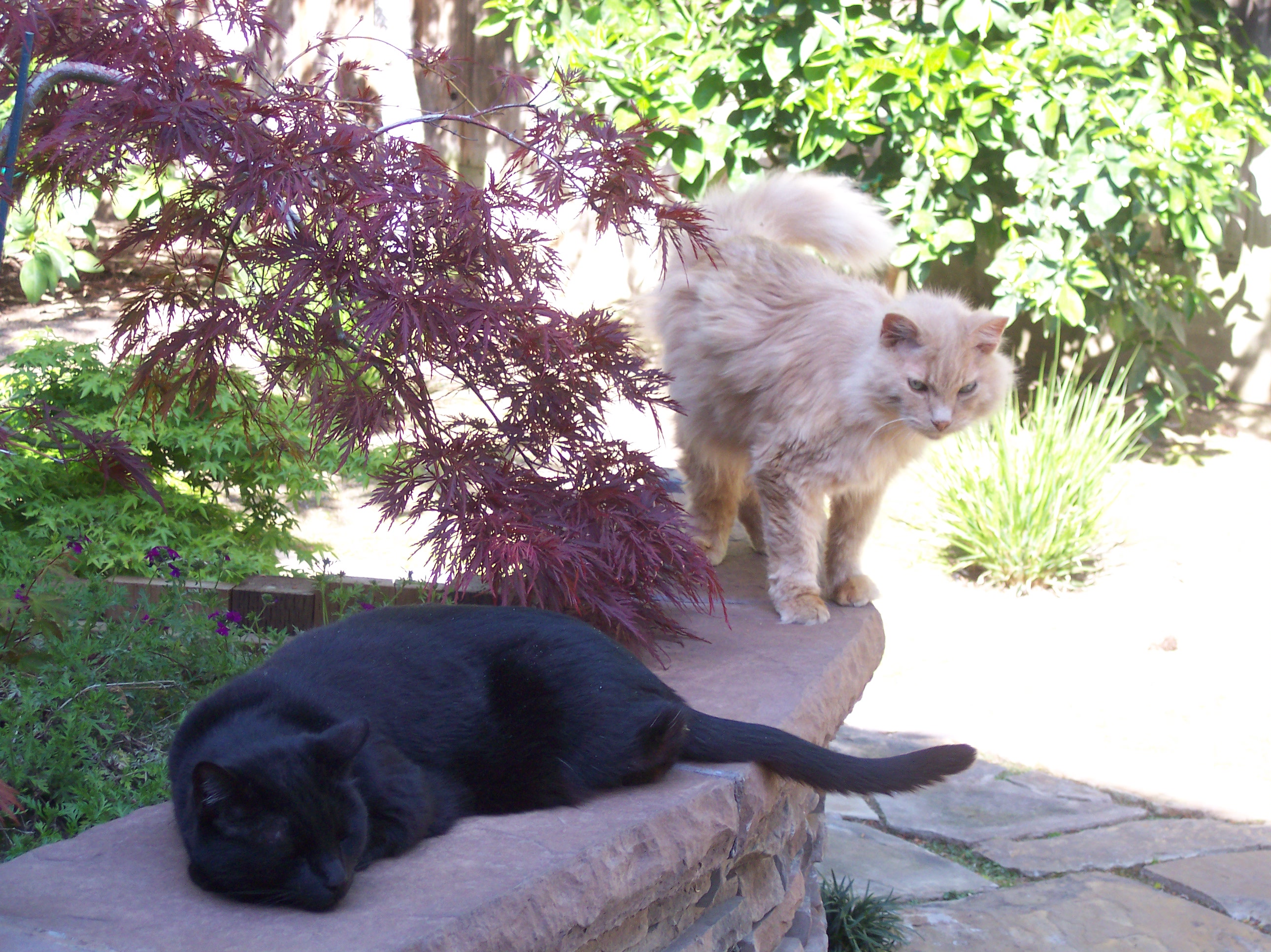We had noticed that Twinkie and another cat or two seemed to live in the neighbor's front yard year-round with no visible shelter. Perhaps there was something in their back yard but the cats were always out front. In cold and wet weather they would often be huddled under a car or up against the garage door. That fall Harley aka "Rocky" brought Twinkie over with him to eat cat food we put out front for the growing number of loose cats that were probably abandoned when their owner's lost their homes in the early years of the housing crisis. Twinkie soon became a frequent visitor. He was very sweet and friendly and eventually, we noticed he was often waiting under the tree in our front yard. When it turned cool and rainy I put a plastic shelter under the tree and he basically never went back home. Yes, the neighbor noticed and commented that Twinkie seemed to be staying at our house and told me how old he was and gave me a little history on him. He seemed to accept that Twinkie had relocated himself. There has never been an issue between us and we've remained friendly neighbors since that time.
During an exam to check an itchy rash (fungal infection), the Vet said Twinkie was geriatric, in poor condition, nuetered, and declawed. No more front yard for Twinkie and he became an inside cat. During the winter, the fungus cleared up, he gained weight, and he became a vigorous satisfied cat. On June 3rd, 2008, he refused to come back inside from an outing in the back yard. After several nights of trying to coax him back indoors I realized that he was demanding the return of his independence. He loved his cubby on the patio (heated in winter) and relished being back outdoors in a safe and secure environment. In late November of 2009, he began sleeping more and eating less and was agreeable to coming back indoors. He passed in his sleep early in the morning on Pearl Harbor Day.
We had noticed that Twinkie and another cat or two seemed to live in the neighbor's front yard year-round with no visible shelter. Perhaps there was something in their back yard but the cats were always out front. In cold and wet weather they would often be huddled under a car or up against the garage door. That fall Harley aka "Rocky" brought Twinkie over with him to eat cat food we put out front for the growing number of loose cats that were probably abandoned when their owner's lost their homes in the early years of the housing crisis. Twinkie soon became a frequent visitor. He was very sweet and friendly and eventually, we noticed he was often waiting under the tree in our front yard. When it turned cool and rainy I put a plastic shelter under the tree and he basically never went back home. Yes, the neighbor noticed and commented that Twinkie seemed to be staying at our house and told me how old he was and gave me a little history on him. He seemed to accept that Twinkie had relocated himself. There has never been an issue between us and we've remained friendly neighbors since that time.
During an exam to check an itchy rash (fungal infection), the Vet said Twinkie was geriatric, in poor condition, nuetered, and declawed. No more front yard for Twinkie and he became an inside cat. During the winter, the fungus cleared up, he gained weight, and he became a vigorous satisfied cat. On June 3rd, 2008, he refused to come back inside from an outing in the back yard. After several nights of trying to coax him back indoors I realized that he was demanding the return of his independence. He loved his cubby on the patio (heated in winter) and relished being back outdoors in a safe and secure environment. In late November of 2009, he began sleeping more and eating less and was agreeable to coming back indoors. He passed in his sleep early in the morning on Pearl Harbor Day.
Sponsored by Ancestry
Advertisement
Explore more
Sponsored by Ancestry
Advertisement



